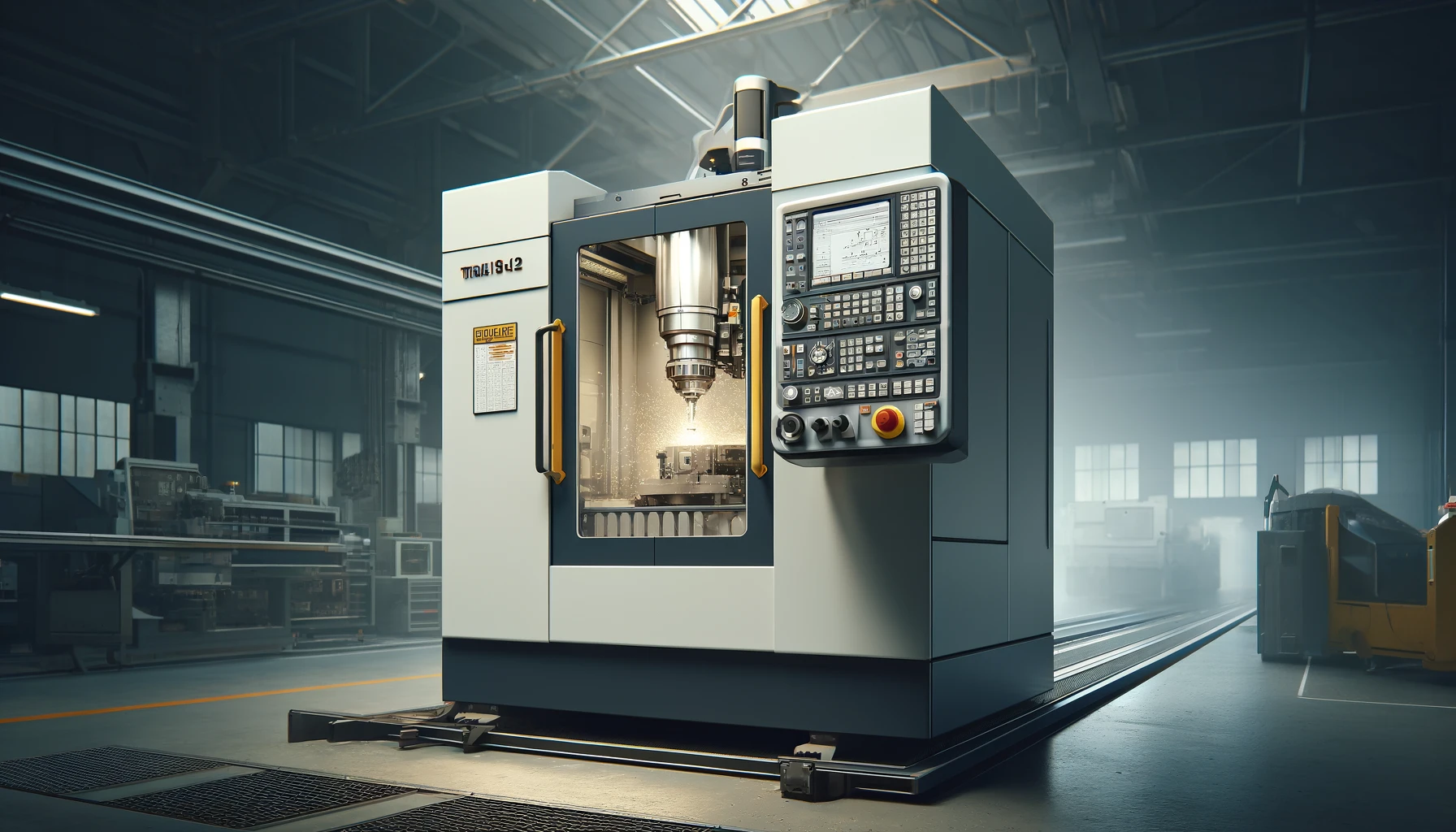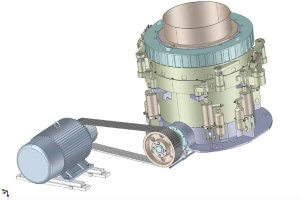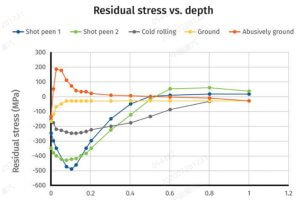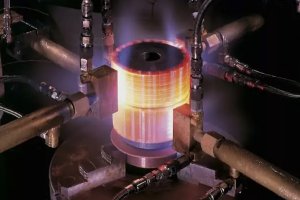Fundamental Principles of Precision CNC Machining in Sealing Device Fabrication
Precision CNC machining is a cornerstone in the fabrication of sealing devices for food automation machinery. This technology allows for precise control over the shape and size of parts, crucial for achieving the tight tolerances required for effective seals. CNC machines, including lathes, mills, and routers, are programmed via sophisticated software to execute exact movements, ensuring that each part is cut, shaped, and finished according to exact specifications.
The process begins with the selection of suitable materials and the design of the part. Using CAD (Computer-Aided Design) software, engineers create detailed 3D models of the sealing devices. These models are then converted into machine-readable code, which guides the CNC machines in fabricating the parts. The key advantage of CNC machining lies in its ability to replicate complex geometries consistently and with high repeatability, which is essential in mass production settings.
Material Selection Impact on CNC-Machined Sealing Devices
Selecting the right materials is vital for the performance and longevity of sealing devices. The materials must not only withstand the mechanical stresses of operation but also meet stringent food safety standards. Here, the focus is on three commonly used materials: PTFE, Nitrile Rubber, and Stainless Steel. Each material is assessed for its properties, including hardness, corrosion resistance, temperature tolerance, and suitability for food contact. Below is an extended table detailing these properties:
| Material | Hardness | Corrosion Resistance | Temperature Resistance | Suitability for Food Contact | Cost | Availability | Machinability |
|---|---|---|---|---|---|---|---|
| PTFE | Soft | Excellent | Up to 260°C | Yes | High | Moderate | Moderate |
| Nitrile Rubber | Medium | Good | Up to 120°C | Conditional | Low | High | Easy |
| Stainless Steel | Hard | Excellent | Up to 170°C | Yes | Moderate | High | Moderate |
| Silicone | Soft | Good | Up to 300°C | Yes | Moderate | High | Moderate |
| EPDM | Medium | Excellent | Up to 150°C | Yes | Low | Moderate | Moderate |
| Viton | Hard | Excellent | Up to 250°C | Yes | High | Low | Difficult |
| Polyurethane | Medium | Fair | Up to 80°C | No | Low | High | Easy |
| Neoprene | Medium | Good | Up to 100°C | Conditional | Low | High | Easy |
This detailed comparison helps engineers choose the most appropriate material based on the specific requirements of the sealing device and the operational conditions it must endure.
Technical Challenges in Machining Complex Sealing Geometries
Machining complex sealing geometries presents several technical challenges. The precision required in these components is crucial, as even minor deviations can lead to leaks, which compromise the efficiency and safety of food automation systems. A key challenge is the machining of intricate grooves and channels, essential for the functionality of the sealing devices.
A case study on the production of a multi-part sealing system for a high-speed beverage bottling line illustrates these challenges. The sealing system required components with varying thicknesses and diameters, each with precise grooves for secure assembly. The CNC machining of these components involved multiple setups and specialized tooling to achieve the necessary precision. The case study highlights the adjustments made to the CNC parameters to accommodate the unique material properties and the required tight tolerances.
Optimization of CNC Programming for Sealing Devices
The optimization of CNC programming is pivotal for enhancing both the efficiency and quality of machined sealing devices. This segment examines how programming can be precisely tailored to meet complex design requirements and reduce material wastage. Optimizing CNC programming involves several strategies, including choosing the right cutting paths, setting appropriate feed rates, and selecting suitable cutting tools.
For instance, consider the programming required for a stainless steel sealing component. To prevent tool wear and ensure precision, the programmer must optimize the cutting speed and choose a multi-flute tool. Here is an example of a segment of CNC code used to machine a complex sealing profile:
G Code:
G01 X15 Y25 Z-5 F150 ; Move to starting position
G02 X45 Y25 I15 J0 Z-5 F120 ; Circular interpolation for inner groove
G01 X45 Y25 Z0 F180 ; Retract the tool
M05 ; Stop the spindleThis example demonstrates how adjustments in the feed rate (F) and tool paths influence the machining process, crucial for achieving the desired accuracy and surface finish on sealing devices.
Considerations in Surface Finishing of CNC-Machined Sealing Devices
Surface finishing is critical in sealing devices, particularly in food automation machinery, where surface hygiene cannot be compromised. This section discusses different finishing techniques, including mechanical polishing, electropolishing, and coating, and their implications on surface integrity and cleanliness.
Here is a detailed table showcasing various finishing methods, the resultant surface roughness, and other pertinent factors:
| Finishing Technique | Surface Roughness (Ra, microns) | Corrosion Resistance | Suitability for Food Contact | Cost | Process Time |
|---|---|---|---|---|---|
| Electropolishing | 0.3 | Excellent | Yes | High | Moderate |
| Mechanical Polishing | 0.8 | Moderate | Yes | Low | Low |
| Laser Finishing | 0.4 | High | Yes | Moderate | Moderate |
| Chemical Coating | 0.5 | Excellent | Yes | High | High |
| Anodizing | 1.0 | Good | No | Moderate | Moderate |
| Plasma Coating | 0.2 | Very High | Yes | High | High |
| Ceramic Coating | 0.45 | High | Yes | High | High |
| Thermal Spraying | 0.7 | Moderate | Conditional | Moderate | Moderate |
This comprehensive table aids manufacturers in selecting the optimal surface finishing technique based on performance requirements and budget constraints.
Integration of Quality Control and Testing in CNC Machining
Quality control (QC) and testing form a critical backbone in the production of CNC-machined sealing devices, especially when these components are destined for food automation systems where precision and reliability are paramount. The integration of advanced QC measures and systematic testing protocols ensures that each sealing device not only adheres to design specifications but also performs optimally in demanding food processing environments.
Detailed Quality Control Process
The QC process begins with the incoming raw materials. Materials are inspected for purity, mechanical properties, and compliance with food safety standards. This is crucial because any impurity or deviation in material specification can lead to failure in the final product. For instance, stainless steel used for food machinery must be free from defects and meet specific grades like 304 or 316 for corrosion resistance.
Dimensional Inspection: Every batch of CNC-machined parts undergoes dimensional inspection using precision tools such as calipers, micrometers, and Coordinate Measuring Machines (CMMs). For example, a sealing device with a complex geometry will be checked for dimensional accuracy to ensure it fits perfectly within its assembly with no leakage.
Surface Roughness Measurement: Since the surface finish can directly impact the sealing capability, surface roughness is measured using profilometers. A surface roughness of Ra 0.8 microns or less is typically required to ensure optimal sealing and hygiene in food applications.
Performance Testing Methods
Leak Testing: Sealing devices undergo rigorous leak testing to ensure integrity. Methods such as air decay testing and hydrostatic testing are employed, where the sealed component is subjected to air or fluid pressure to detect any leaks.
Load Testing: To simulate real-world stresses, sealing devices are subjected to load testing where forces are applied to the component to ensure it can withstand operational pressures without deforming or failing.
Fatigue Testing: This test is crucial for determining the durability of the sealing device under repeated cycles of stress. Fatigue testing helps identify the life expectancy of the component under typical usage conditions.
Case Study: Implementing Statistical Process Control (SPC)
A practical example of advanced QC in CNC machining can be seen in a case study from a major manufacturer of food packaging machinery. The company integrated Statistical Process Control (SPC) into their manufacturing process to enhance the quality and reliability of their sealing devices. By collecting and analyzing data from the machining process, such as cutting speeds, feed rates, and tool wear, the company was able to identify trends and make adjustments in real-time, significantly reducing variability and defects.
Data Collection: Sensors and data logging tools are installed on CNC machines to collect real-time information on various parameters like temperature, force, and vibration.
Data Analysis: The data are analyzed using statistical software to track trends and detect any deviations from the norm. For instance, an increase in tool wear might be correlated with a change in material batches, prompting an investigation into material quality.
Continuous Improvement: Based on the analysis, the manufacturing process is continuously adjusted to optimize the quality of the sealing devices. This might involve changes in tooling, adjustments in CNC programming, or even tweaks in the workflow.
SPC Impact Table:
| Parameter | Pre-SPC Variability | Post-SPC Variability | Improvement |
|---|---|---|---|
| Dimensional Accuracy | ±0.05 mm | ±0.02 mm | 60% |
| Surface Roughness | Ra 1.0 microns | Ra 0.5 microns | 50% |
| Defect Rate | 5% | 1% | 80% |
Through rigorous quality control and the integration of advanced testing methods, manufacturers ensure that the CNC-machined sealing devices not only meet the required specifications but also exceed performance expectations in real-world food processing applications. This comprehensive approach to QC and testing is essential for maintaining high standards in food safety and machinery reliability.
Advances in CNC Technology for Sealing Device Production
Advancements in CNC technology continue to revolutionize the production of sealing devices. Innovations such as multi-axis machining centers, robotic integration, and adaptive machining have made it possible to enhance both the precision and speed of production.
Here’s a look at some recent data showcasing the impact of these technological advancements:
| Technology | Increase in Production Speed | Reduction in Waste | Improvement in Precision | Cost Reduction |
|---|---|---|---|---|
| Multi-axis Machining | 30% | 20% | 25% | 15% |
| Robotic Automation | 40% | 25% | 10% | 20% |
| Adaptive Machining | 20% | 15% | 30% | 10% |
| Real-Time Monitoring | 10% | 30% | 20% | 5% |
These advancements not only optimize production processes but also contribute to sustainability by minimizing waste and energy consumption.
Other Articles You Might Enjoy
- Elevating Precision Standards through Chamfer in CNC Machining
1. Introduction: The Pursuit of Unparalleled Precision In the realm of CNC machining, precision is paramount. This section introduces the article by exploring the significance of precision in manufacturing and…
- Precision Prowess: Unveiling the Advantages of China CNC Machining
1. Introduction: The Role of Precision in Manufacturing Excellence In this introductory section, we delve into the critical role that precision plays in manufacturing and set the stage for an…
- Revolutionizing CNC Machining for Complex Aerospace Assemblies
Introduction to CNC Machining in Aerospace Assemblies Computer Numerical Control (CNC) machining represents a significant technological development playing a notable role in the creation of complex aerospace assemblies. CNC machining…









